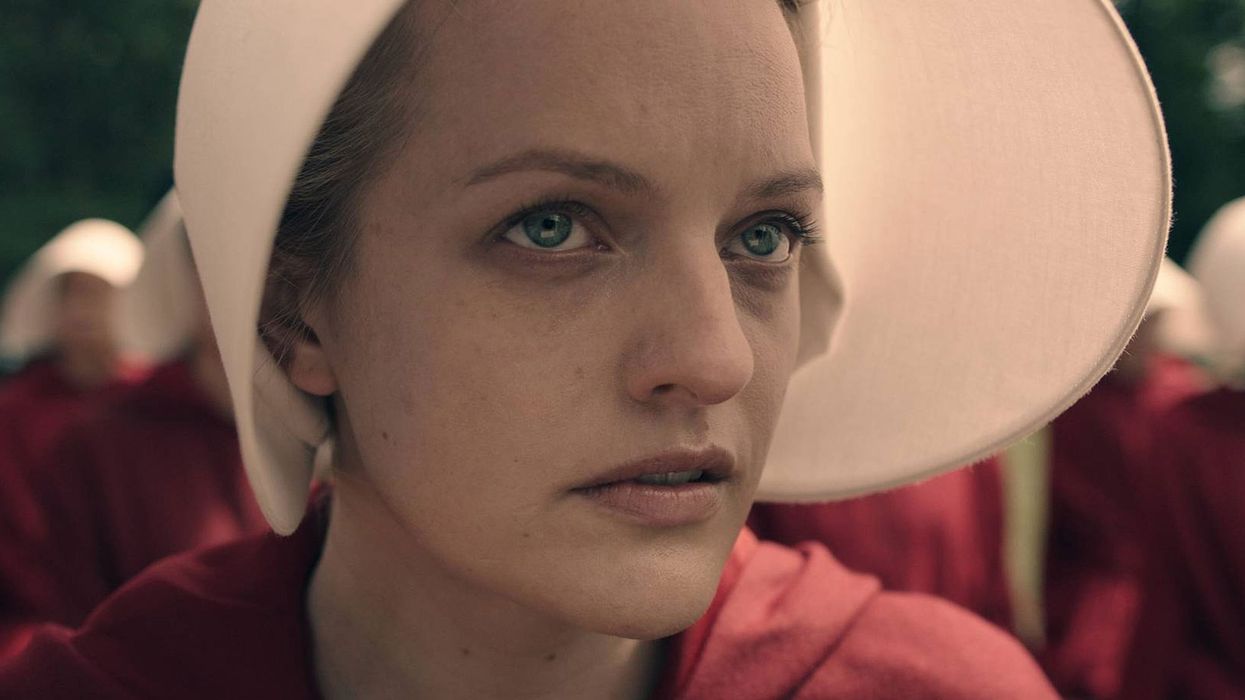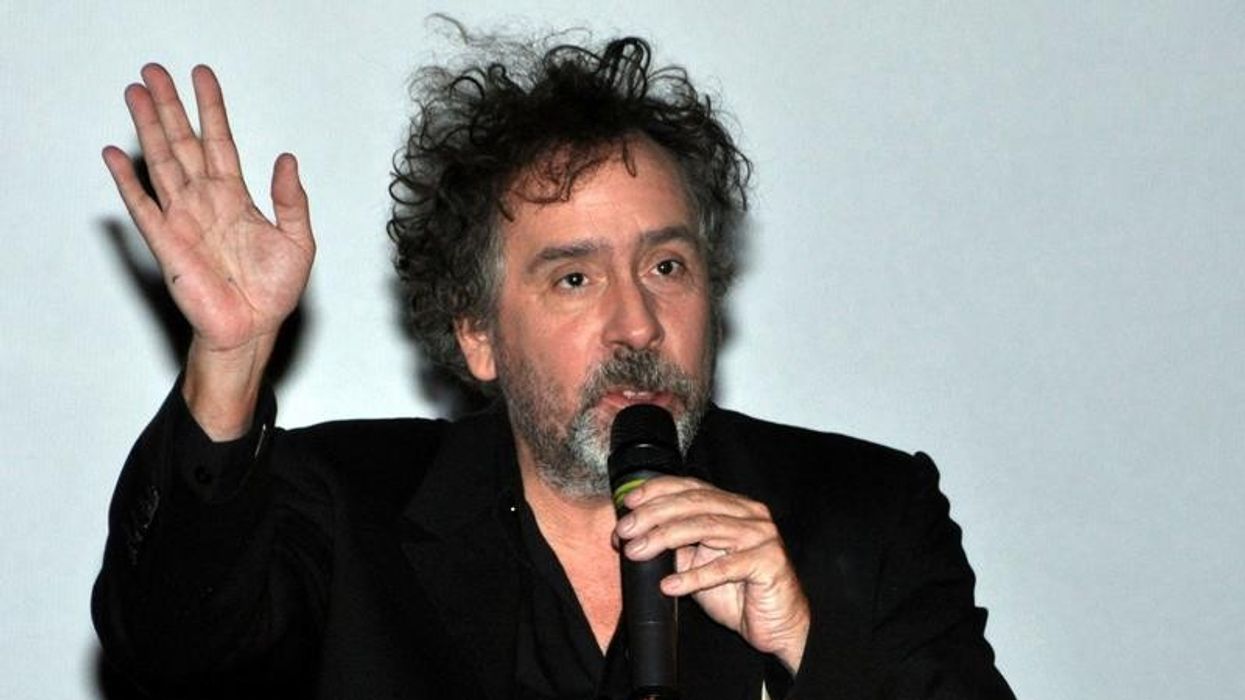'The Handmaid's Tale': DP-Turned-Director Reed Morano on 'Disturbing, Kubrick-Inspired' Series
Reed Morano, director of the first three episodes of 'The Handmaid's Tale,' pushed the boundaries of TV as far as the studio would let her.

It's hard to understate the unnerving feeling that Hulu's new series The Handmaid's Tale inspires. Adapted from Margaret Atwood's novel of the same name, it's the near-future story of a totalitarian theocracy, Gilead, that has overtaken the American government, stripping women, homosexuals, and dissidents of their rights according to a Puritan value system that is enforced with brutal violence.
Among the subjugated is Offred (Elisabeth Moss), who has been captured while attempting to flee to Canada with her husband and young child. Because she is able to conceive—a rare commodity in this world, where pollution has rendered many women infertile—Offred is forced into sexual slavery. She spends her days serving her Commander, who ritually rapes her in hopes that she bears a child. She's unable to speak unless spoken to (and even then, only in religious doublespeak), read, learn, or retain any semblance of independence, lest she harbor a death wish.
Watching the series, that chilling feeling arises from a faint sense of recognition: this horrifying world, while dystopian, is possible, if not imminent. Even more, it already exists in some parts of the world.
"I pushed the boundaries as far as my producers and MGM would let me." — Reed Morano, director of The Handmaid's Tale
Yet despite its nightmarish content, Gilead is rendered beautifully by showrunner Bruce Miller and director Reed Morano, who infuse the series with a sense of visceral immediacy and build out the world with stunning detail. Miller and Morano have taken the complex source material—the book is written entirely in Offred's narration, no less—and transformed it into a cinematic journey that alternates between the present, with its gilded, back-to-the-land veneer that only vaguely obscures mortal danger, and the past, a vérité vision of the modern world that, to the women of Gilead, feels like a long lost pipe dream.
Morano's visual acuity is to be expected; she is a longtime cinematographer, one of only 14 women of 364 active members in the American Society of Cinematographers. Morano hired Colin Watkinson to shoot The Handmaid's Tale on the ARRI Alexa with a Technicolor palette and meticulously composed frames—some of which, Morano says, were inspired by Kubrick. This is especially evident in the series' use of natural light, which often floods through windows like solid beams of crystal penetrating a grim world.
No Film School caught up with Morano just before the premiere of The Handmaid's Tale at Tribeca 2017 to discuss the risks she took to make the Hulu series come to life.
No Film School: Recently, you said you were able to execute some pretty wild ideas for the show. Where did they come from?
Reed Morano: It's an accumulation of ideas after reading the pilot. I thought, what would be the best way to put the audience into this character's shoes? What would disturb the audience the most? That was what I was after. And with that in mind, thinking, how do you separate all these different worlds? The world of the past and the world of the present. Much of the story is told through flashbacks.
I did make some very strange choices, but people got on board with them. We were like, how do you make this world that's very dark be bearable? And that did require making some out-of-the-box choices. I pushed the boundaries as far as my producers and MGM would let me.
"I wanted these disconcerting frames that were a bit too symmetrical or prism-like. Then, I mixed in a handheld camera that's very mobile."
NFS: With your extensive background in cinematography, how did you conceive the visual aesthetic of the show?
Morano: Obviously, something was weird and off about Gilead [the dystopian world of the show]. I wanted these disconcerting frames that were a little bit too symmetrical or prism-like, like [Stanley] Kubrick. Then, I mixed in a handheld camera that's very mobile.
With the flashbacks, they're memories of a time where things were better. A lot better. We took those times for granted. I thought about when I've had memories of things that were very important to me. They're fleeting. How do you capture that with a camera? I decided on a romantic, impressionistic way of shooting it—not shooting straightforward coverage, but more just capturing pieces. Almost the way you remember things that happened to you in the past.

Morano: I'm a lot more sensitive to [working with a cinematographer]. Colin is awesome. It's much more about personality; Colin and I respect each other and want to hang out with each other.
We have two somewhat different styles of shooting as cinematographers, and that's actually what drew me to him. I thought it would be interesting for him to take my gritty aesthetic and his glossy aesthetic that's more heightened, and then combine the two and then have this whole new hybrid of both of us.
"I wouldn't have been ready to do something like this had I not already been a DP for tons and tons of directors."
NFS: Can you think back to a difficult challenge that you had to face shooting this?
Morano: They were many. I mean, we only had eight days to shoot episodes two and three. You're trying to create this elevated, movie-like experience, and you have almost no time with which to do that. It's really tricky. Time was the biggest challenge in creating something that that doesn't feel shortchanged or quick or basic with coverage.
Also, so much of the script is voiceover. And you can't just shoot [Offred] standing there while we're listening to the words in her head. You have to think of so many other visuals that elicit an emotional response—that would enhance the voiceover and sustain it. Not that it was hard to come up with things; it was just hard to say to the producers that I needed to shoot all these things. It was about trying to be judicious and get as much as you can.

Morano: You have to move really fast. Well, indie films are like that, too; we're making a feature right now that's very low-budget and we've got to move really fast. Sometimes you can't get all the things that you want. You have to prioritize, and that's hard. It forces you to make decisions that you're gonna have to live with, and a lot of people don't want to do that. They want to shoot everything. You can't get everything.
But it makes you a better filmmaker. You're like, "You know what? Fuck it. I know I can make it work with this." You have to be bold enough to take the risk with that moment. It's really empowering.
NFS: Do you have any advice for up-and-coming cinematographers or directors?
Morano: Don't underestimate working for other people. That's where I gained confidence. I wouldn't have been ready to do something like this had I not already been a DP for tons and tons of directors. That's where you learn. You learn what to do. You learn what not to do.
For more, see our complete coverage of the 2017 Tribeca Film Festival.











